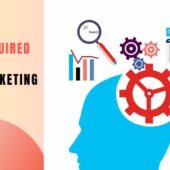As a small business owner in India, you’re always looking for ways to reach out to your audience and grow your business. With so many different marketing tactics available, it can be overwhelming to choose the right one. However, email marketing remains one of the most effective ways to connect with your target audience, build relationships, and drive sales. In this ultimate guide, we will explore the ins and outs of email marketing, and provide you with actionable tips to get started.
Table of Contents
ToggleWhat is Email Marketing?
Email marketing is a digital marketing strategy that involves sending commercial messages, updates, or promotional content to a group of individuals or a specific target audience via email. It is a widely used method by businesses and organizations to communicate with their customers, build relationships, and promote their products or services.
Email marketing allows businesses to reach a large number of people directly in their inbox. It typically involves sending emails to a list of subscribers who have willingly provided their email addresses or have shown interest in receiving information from the business. These subscribers may include existing customers, potential customers, or individuals who have shown interest in the business through website sign-ups, purchases, or newsletter subscriptions.
Why is Email Marketing Important for Small Business Owners?
Email marketing is a cost-effective and efficient way to connect with your audience. As a small business owner, you likely have limited resources, and email marketing provides you with an opportunity to reach out to your customers and prospects without breaking the bank.
Moreover, email marketing allows you to target specific segments of your audience with personalized messages that speak directly to their needs and interests. By providing valuable content and promotions, you can build trust with your subscribers and encourage them to become loyal customers.
Building an Email List
The first step in email marketing is building an email list. This is a list of people who have given you permission to send them emails. There are several ways to build an email list:
- Add a sign-up form to your website: Add a sign-up form to your website’s homepage, blog, or other pages. Make sure the form is prominently displayed and provides a compelling reason for people to sign up.
- Offer a lead magnet: A lead magnet is a free resource, such as an e-book, checklist, or webinar, that you offer in exchange for someone’s email address.
- Host events: If you host events, such as webinars or workshops, ask attendees to sign up for your email list.
- Use social media: Use your social media channels to promote your email list and encourage people to sign up.
Creating Email Campaigns
- Use a Compelling Subject Line: Your subject line is the first thing your subscribers will see, so it’s crucial to make it stand out. Use a concise and attention-grabbing subject line that accurately reflects the content of your email. Avoid using misleading or spammy subject lines, as this can harm your email deliverability and reputation.
- Segment Your Email List: Segmenting your email list allows you to send targeted messages to specific groups of subscribers based on their interests or behaviors. This can help improve your open and click-through rates and make your emails more relevant and engaging. Consider segmenting your list based on factors such as demographics, past purchases, or engagement history.
- Provide Value in Your Emails: Your subscribers are looking for value from your emails, whether it’s in the form of helpful tips, industry news, or exclusive promotions. Make sure your emails provide something of value to your subscribers, and avoid sending purely promotional or sales-focused emails.
- Use a Clear Call-to-Action (CTA): Your email should have a clear and actionable CTA that tells your subscribers what you want them to do next. Make your CTA stand out and easy to follow, whether it’s to make a purchase, sign up for a webinar, or read your latest blog post.
- Optimize for Mobile: With more than half of all emails being opened on mobile devices, it’s crucial to optimize your emails for mobile viewing. Keep your email design simple, use a legible font size, and use a responsive design to ensure that your email looks good on different screen sizes.
- Personalize Your Emails: Personalization can help make your subscribers feel valued and engaged. Use their name in the email subject line and greeting, and consider segmenting your email list to send personalized messages to different groups of subscribers based on their interests or behavior.
- Keep Your Subject Line Clear and Concise: While it’s important to use a catchy and attention-grabbing subject line, it’s equally important to keep it clear and concise. Avoid using spammy or misleading subject lines, as this can result in your emails being marked as spam.
- Optimize Your Email Content for Mobile: In addition to optimizing your email design, it’s important to ensure that your email content is also optimized for mobile viewing. Keep your content concise and scannable, use short paragraphs and bullet points, and include a clear and actionable CTA.
- Include a Clear Call-to-Action (CTA): Every email you send should have a clear and actionable CTA that tells your subscribers what you want them to do next. Make your CTA stand out and easy to follow, whether it’s to visit your website, download an e-book, or sign up for a free trial.
- Test and Optimize Your Emails: To improve the effectiveness of your email campaigns, it’s important to test and optimize different elements such as subject lines, content, images, and CTAs. A/B testing can help you identify what works best for your audience and refine your email marketing strategy accordingly.
Conclusion
By following the steps outlined in this guide, you can create an effective email marketing strategy that delivers results. Remember to always prioritize your audience’s needs, segment your email list, craft compelling subject lines and email content, and continually track and optimize your campaigns for success. With these best practices in mind, you can leverage the power of email marketing to grow your business and achieve your goals.



